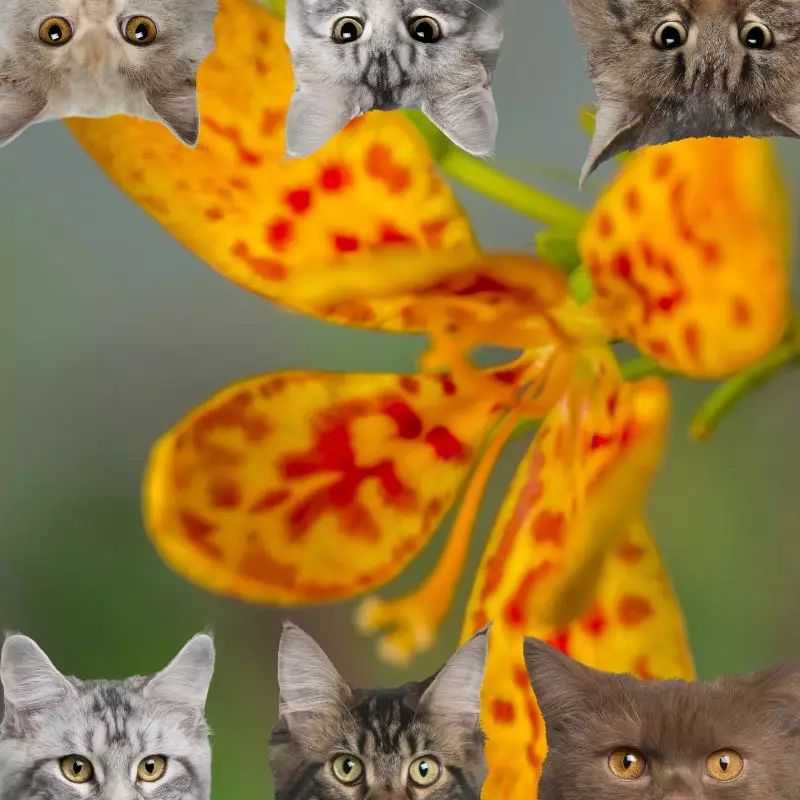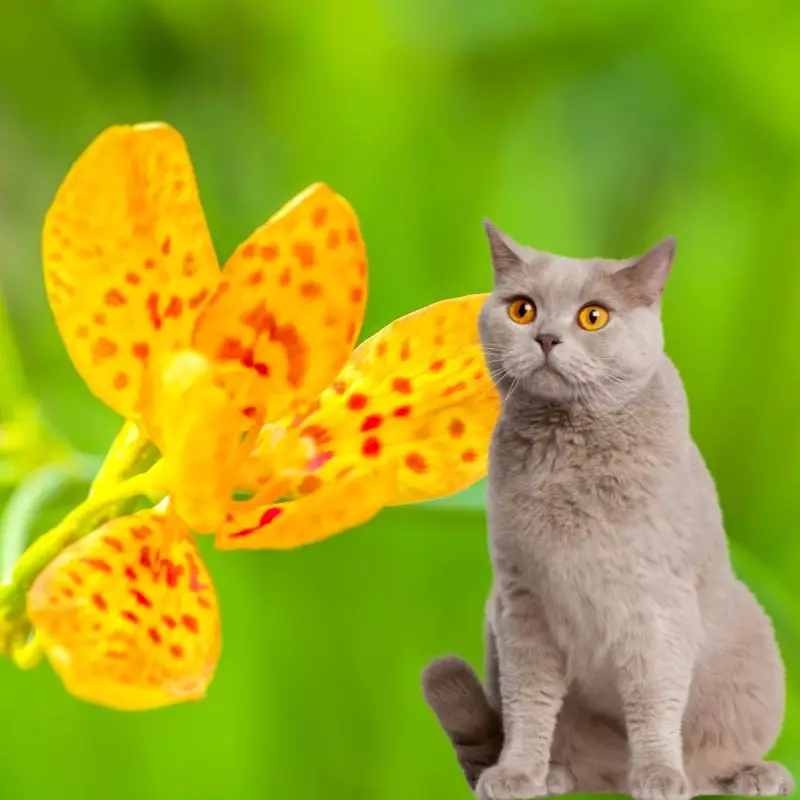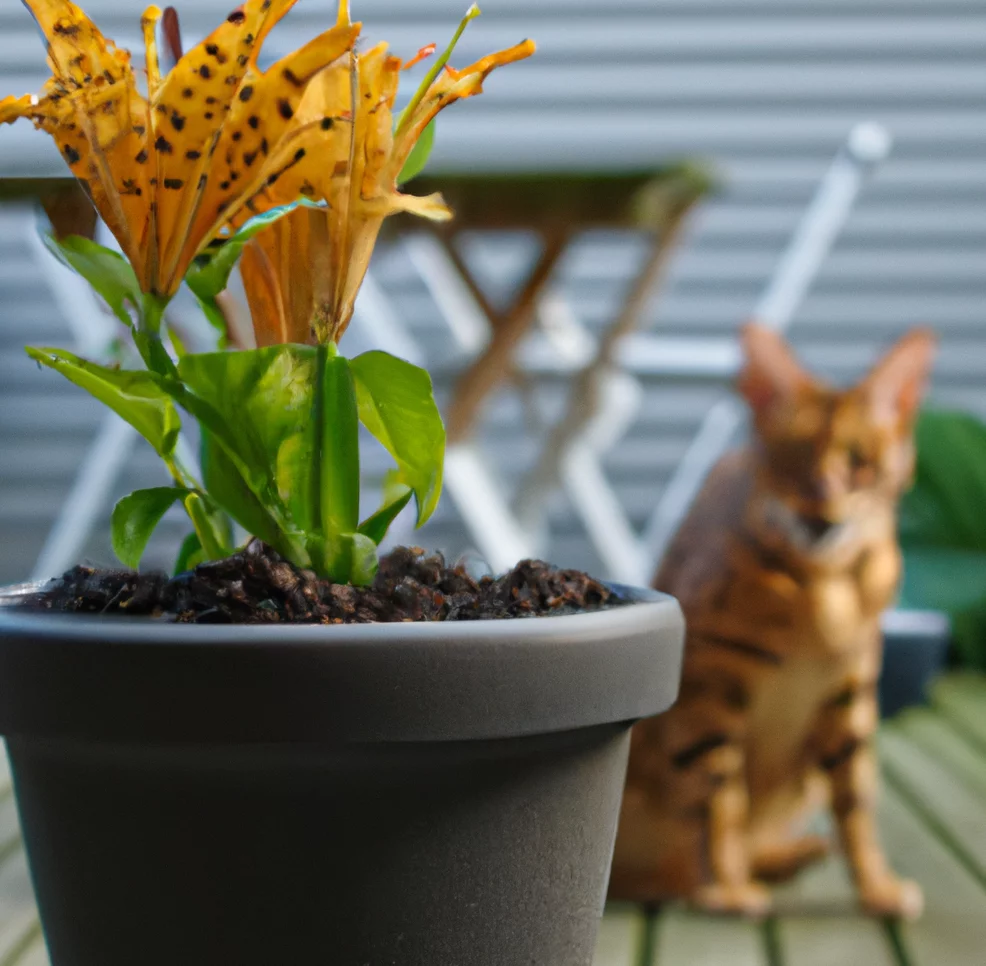Leopard Lilies are not toxic to cats. Contrary to its name, the Leopard Lily is not a true lily, which are often harmful to felines.
This article has been meticulously crafted in collaboration with a team of experienced DVMs (doctors of veterinary medicine). Leveraging their expertise, we delve into an accurate and up-to-date analysis of the potential risks associated with various plants, particularly focusing on the Leopard Lilies in this context. Furthermore, our research encompasses high-authority websites such as the ASPCA and PetMD. Notably, the Leopard Lily is listed by the ASPCA as a non-toxic plant, ensuring its safety not just for cats, but also for dogs and horses.
Can Cats Eat Leopard Lily?

If your cat only bit a small piece of leopard lily, then there is nothing to be afraid of. Since the plant does not have toxic properties, it will not harm your feline companion.
However, always keep in mind that cats are carnivores. Given this fact, it is not recommended for them to eat plants regularly. Thus, you should still restrict your cat from eating leopard lilies or any other plants.
Eating a large quantity of leopard lily may cause cats to suffer from indigestion. It may also lead to vomiting and mild diarrhea.
What is Leopard Lily?

Leopard lily, also known scientifically as Lachenalia lilacina, is a bulbous perennial plant in the Asparagaceae subfamily Scilloideae. Namibia and South Africa are the most common locations for these plants. Most of them go dormant for a while, but new roots sprout every year.
Leopard lily is now known botanically as Lachenalia orchioides. The species is commonly referred to as Cape cowslip, despite the fact that it is not even remotely related to the actual cowslip.
Leopard lily plants grow to be 10 to 15 cm tall. Its basal leaves are simple. They are lanceolate in shape and have complete edges. In February and March, the plant produces spikes of light purple campanulate blooms.
Leopard lilies enjoy bright sunlight and dry to moderately damp soil. Sandy loam should be used as the substrate. The plants can withstand temperatures as low as -7°C. They are best grown in a cold frame; cultivating them outside is only practicable in frost-free locations.
Keeping Cats Away From Leopard Lily

Cats are inquisitive by nature so they will always try to touch your interesting plants. To keep them away, you should try placing your plants in a room that your cats cannot access.
You may also place your houseplants on top of a shelf or in a hanging basket if possible. If your cat cannot reach your plants then they will not have the urge to get near them.
Other cat owners have also suggested wrapping your plant pots with double-sided adhesive tapes. Because cats are not fond of its sticky texture, they will avoid touching this and thus will not continue their plans of scratching your pots or messing with your plants.
Plants to Avoid For Your Cats
If you are a cat owner and unsure if the plants growing in your yard are harmful to your cats, check out this list of toxic plants for cats. You can also check our list of non-toxic plants for cats.





